|
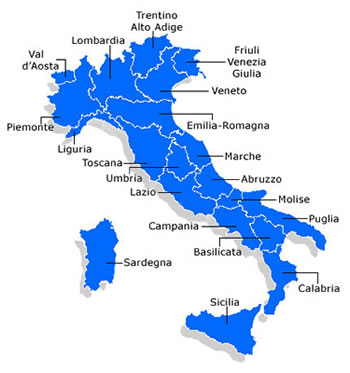 Regions of Italy Regions of Italy
Italy is divided into 20 regions. Each region is divided into Provinces, and each province is divided into municipalities. The Italian regions are important in that many customs and cuisines are regional in Italy. Here you'll find information on the 20 regions of Italy.
Every town, every village, makes the same dish in vastly different ways, and every town and village has its proudest specialty. These cooking traditions define people's identities just as much as their dialects and their traditional costumes.
Local cooking preferences and customs are shaped by geographic, historical, and climactic differences: some regions are landlocked and mountainous, others hug the sea and are hilly; some regions have absorbed Arab or Greek influences, others have been marked by the French or Austrians; some regions live under the dazzling Mediterranean sun most of the year, others have cold winters, snow, fog, and harsh winds.
Italy is a small country (less than half the size of Texas), but it is one with a long and venerable history. From the fall of the Roman Empire in 476 to 1861, when it was finally unified under one kingdom, Italy was made up of independent city states, republics, and regions that spent much of their time fighting off encroaching neighbors and outside intruders. This, along with the fact that the large-scale exchange of culinary traditions among Italians is a recent phenomenon (linked to modern roads, technology, and an improved post-war economy), explains how Italy managed to maintain its varied cuisines into the twenty-first century.
The following map below shows you a geographic view of all of Italy. The following Provinces are Abruzzo, Basilicata, Calabria, Campania, Emilia Romagna, Friuli Venezia Giulia, Lazio, Liguria, Lombardia, Marche, Molise, Piemonte, Puglia, Sardegna, Sicilia, Tuscany, Trentino Alta Aldige, Umbria, Val D'aosta, Veneto.
Regions of Italy
- Northern Italy - Liguria • Piemonte • Lombardia • Veneto • Friuli-Venezia Giulia • Val d'Aosta • Trentino Alto Adige
- Central Italy - Le Marche • Tuscany • Umbria • Emilia Romagna
- Southern Italy - Campagnia • Sicily • Calabria • Puglia • Lazio • Abruzzi • Molise • Basilicata • Abruzzi • Sardegna
|
|
|
Northern Italy
|
|
 |
|
|
| |
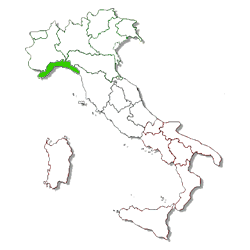 Liguria - Northern Italy Liguria - Northern Italy
Liguria runs along the coastline bordering France, and includes the Italian Riviera and the Cinque Terre. Ideal for a seaside or walking holiday, the region enjoys a mild climate in winter. Miles of coastline, Liguria is a narrow area over the northern part of the Mediterranean. The mountains form a shelter against the cold northern winds, keeping the weather mild for most of the year. Ligurians live in a tiny valley between the sea and the mountains a few miles inland.
For more information on Liguria click here →
|
Peimonte - Northern Italy
|
| |
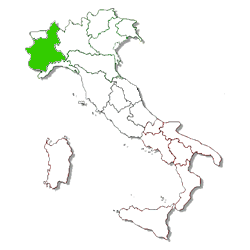 Piemonte - Northern Italy Piemonte - Northern Italy
In Italian, piedi (pie) means "foot" and montania (monte) means "mountains," therefore the name Piemonte. An apt name for this landlocked region at the foot of the Alps. Sharing a border with France on Italy's northwest edge, Piemonte is a land of high mountains, soft hills, rich cities, gentle farmers, and picturesque vineyards.
For more information on Piemonte click here →
|
Lombardia - Northern Italy
|
| |
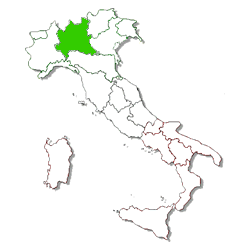 Lombardia - Nothern Italy Lombardia - Nothern Italy
Lombardia is a wealthy land-locked region situated between the Alps in the north and the Po in the south and has some of Italy's most beautiful and varied terrain. The high mountain peaks prevents the cold northern European weather from penetrating the region which drops down into alpine foothills, then falsl away into the soft hills. With its extremely fertile land, Lombardia has the best yields per acre of any region in Italy.
For more information on Lombardia click here →
|
|
| |
 Veneto - Northern Italy Veneto - Northern Italy
Pronounced As: ven-e-toe , Ital. Veneto or Venezia Euganea, region (1993 pop. 4,391,831), 7,095 sq mi (18,376 sq km), NE Italy, bordering on the Gulf of Venice (an arm of the Adriatic Sea) in the east and on Austria in the north. One of the great destinations of the world, Venice dominates this region so much that it's easy to forget what lies beyond this unbelievable city. Covering a stretch of land between the Alps, the Dolomites, and the Gulf of Venice; a tiny piece of it touches Austria. Veneto has a remarkable variety of terrain, contributing to the variety of this region's cuisine.
For more information on Veneto click here →
|
Friuli Venezia Giulia - Northern Italy
|
| |
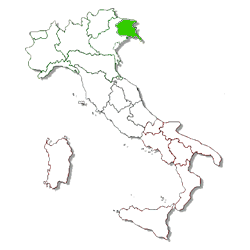 Friuli Venezia Giulia - Northern Italy Friuli Venezia Giulia - Northern Italy
This region features beautiful Adriatic beaches, stunning mountain views, and vineyards. Largely undiscovered by tourists, Friuli-Venezia-Giulia shares borders with Austria and Yugoslavia. The fusion between the Po Valley and the Alps form the foundation of the region's cuisine yet Austrian, Yugoslavian, and Oriental influences are easy to spot. Corn is the principal crop, followed by beans, and fruits and vegetables, including white turnips, asparagus, and the pleasantly bitter dwarf chicory. Dumplings (gnocchi) are one of the region's specialties and may be made of potatoes, squash, or stale bread. Pork is the poor man's meat of choice, but Friulians also catch all kinds of seafood off the Adriatic.
For more information on Friuli Venezia Giulia click here →
|
Val d'Aosta - Northern Italy
|
| |
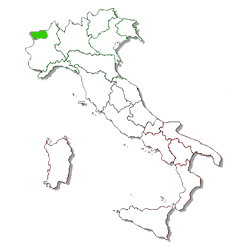 Val d'Aosta - Northern Italy Val d'Aosta - Northern Italy
The smallest region of Italy, Valle d'Aosta is separated from France and Switzerland by the dramatic, icy peaks of the Alps. Here in the birthplace of fontina cheese, grazing cows outnumber the region's inhabitants. The two most important elements of this cuisine are bread and soup, which often contains bread. The local bread, pane nero ("black bread") is made from rye flour and is the primary product in a variety of recipes. Pasta is not traditional in this area; instead, polenta, rice, and gnocchi appear as first courses. As the Valle d'Aostans are mountain people, game is a particularly important part of this region's cuisine.
For more information on Val d'Aosta click here →
|
Trentino Alto Adige - Northern Italy
|
| |
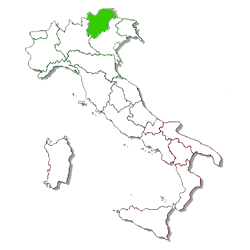 Trentino Alto Adige - Northern Italy Trentino Alto Adige - Northern Italy
Trentino Alto Aldige is separated from Veneto by the dramatic mountains at Italy's northernmost edge. Although the two areas are geographically united, from a gastronomic perspective, Trentino and Alto Adige are two distinct regions. Trentino's cuisine is decidedly Venetian. Polenta is a staple, often accompanied by some of the region's overwhelming array of mushrooms. The harvest of wild mushrooms, in which the Dolomites are rich, includes porcini, chanterelles, chiodini, and a host of others. In the summer and autumn, Trento has a fabulous mushroom market, with hundreds of different varieties. Everyone in this region seems to be a mushroom expert. Even some members of the police are micologi (mushroom experts), who inspect mushrooms in the market to make sure they are safe to sell.
For more information on Trentino Alto Adige click here →
|
|
Central Italy
|
|
 |
|
Le Marche - Central Italy
|
| |
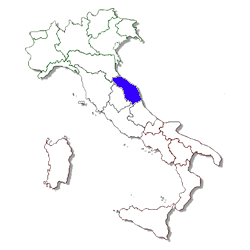 Le Marche - Central Italy Le Marche - Central Italy
Bordered by Umbria on one side and the Adriatic Sea on the other, Marche is partly mountainous, with land sloping from the mountains right down to the sea. Tourists flock to Marche's straight, smooth, sandy beaches, but the region's interior goes largely ignored. The Adriatic offers an outstanding variety of blue fish and crustaceans, some of which are rare and can only be found on this coast.
For more information on Le Marche click here →
|
|
| |
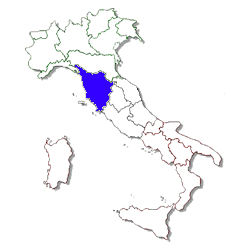 Tuscany - Central Italy Tuscany - Central Italy
Toscana, region (approximately 3,712,677), 8,876 sq mi (22,989 sq km), N central Italy, bordering on the Tyrrhenian Sea in the west and including the Tuscan Archipelago. Toscana, famous for its art, architecture, rolling hills, and smooth beaches, is the cradle of the Renaissance. It is this popular destination that gave us da Vinci, Michelangelo, and Puccini. It's no surprise then that Toscana is the birthplace of Italy's most creative and elegant cuisine.
For more information on Tuscany click here →
|
|
| |
 Umbria - Central Italy Umbria - Central Italy
At the center of Italy is a tiny, unspoiled area, a land of brilliant green mountains and hills and dazzling blue lakes and rivers. Often described as "enchanted," Umbria is full of abbeys, monasteries, and convents. Umbrian dishes rarely contain more than four or five ingredients, and meats and vegetables are often served plain or without sauce. Meat is important to this region, and it is here that salami is at its best. Pork products--salami, sausages, cured and smoked meat--appear on every restaurant's antipasto cart. Beef is also good, especially when it comes from cattle bred near the Tuscan border.
For more information on Umbria click here →
|
Emilia Romagna - Central Italy
|
| |
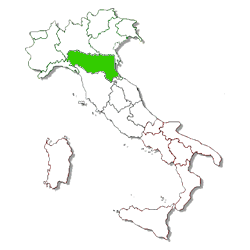 Emilia Romagna - Central Italy Emilia Romagna - Central Italy
Home of homemade pasta, prosciutto and parmigiano. Emilia-Romagna is the motherland of homemade pasta. In Bologna, tagliatelle, lasagne, and tortellini are favorites. In Emilia, preparing pasta is second nature and like an artform to watch. Pork is a tradition of Emilia-Romagna's cuisine. Prosciutto, the most famous of Italy's pork products, is made in Parma. Coppa and pancetta are specialties of Piacenza in the north.
For more information on Emilia Romagna click here →
|
|
Southern Italy
|
|
 |
|
Campagnia - Southern Italy
|
| |
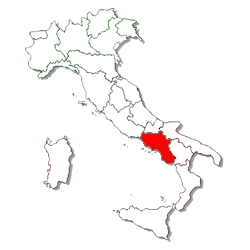 Campagnia - Southern Italy Campagnia - Southern Italy
Central Italy (est. pop. 5,191,731) 5,249 sq mi (13,595 sq km) Located on the shin of Italy's boot, The cuisine of Campania and Naples is famous thoughout the world. Spaghetti with tomatoes and basil. Spaghetti Vongole. pizza topped with mozzarella, stuffed tomatoes and eggplant parmigiana. As well as fresh mozzarella made from buffalo or cow's milk, there is good ricotta, goat cheeses and caciocavallo. Lemons are used in granita and limoncello. Wherever you go in this region, Mt. Vesuvius casts a dramatic shadow over the fertile landscape. Thanks to the volcanic soil, Campania yields some of the best fruits and vegetables in Italy.
For more information on Campagnia click here →
|
|
| |
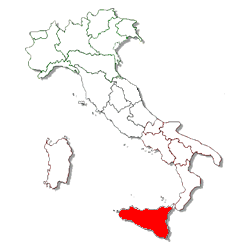 Sicily - Southern Italy Sicily - Southern Italy
The largest of the Mediterranean islands, Sicilia is home to spectacularly beautiful mountains and heavenly beaches, as well as Greek temples and Baroque churches. The Greeks, Phoenicians, Romans, Arabs, Normans, French, and Spaniards all marched across Sicilia at one time or another, and their influence is evident in the region's cooking style. The Greeks exerted their influence on the preparation of fish and vegetables. The Arabs brought eggplants, spinach, apricots, almonds, couscous and spices and showed the Sicilians how to preserve fish and fruit, as well as how to make some of the candies for which they're now famous. The Normans advanced Sicilian baking.
For more information on Sicily click here →
|
Calabria - Southern Italy
|
| |
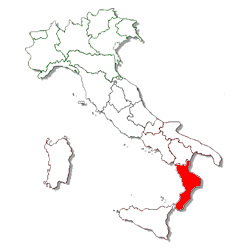 Calabria - Southern Italy Calabria - Southern Italy
Home to magnificent high, rugged mountains, Calabria is filled with snow until the end of May. Unlike neighboring Basilicata, Calabria has wooded areas where flowers bloom and wildlife and greenery abound. The region boasts some of the cleanest water on the whole Italian coastline due to the lack of pollutant development in the area. Chestnuts, olives, citrus trees, almonds, and figs all grow well in Calabria's subtropical climate. A species of orange that grows only in Calabria, called arancia calabrese, is prized for its skin, which is boiled and candied, and sent all over Italy for use in fruitcake and pastries.
For more information on Calabria click here →
|
|
| |
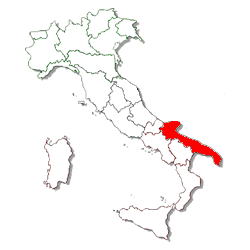 Puglia - Southern Italy Puglia - Southern Italy
Puglia is adorned with a long, beautiful coast line, largely free of tourists and development. The heel and spur of Italy's boot produces hearty fruits and vegetables, a main addition of Puglian cuisine. Puglia's cuisine is fairly uniform, due to the friendly attitude in this flat country side. Relying on the same ingredients through out the region.
For more information on Puglia click here →
|
|
| |
 Lazio - Southern Italy Lazio - Southern Italy
Lazio's is the region comprised of farmland that surrounds Rome. Down the road is Rome, the city of love and food . The Romans believe in simplicity and using the simplest ingredients for their recipes. Gnocchi di Semolino, a large dumpling made from just semolina flour, milk and eggs, is a prime example, as is Rome's well-known egg drop soup, Stracciatella. The prefered foods of Rome are bread, cheese, olives, fresh vegetables, and pasta.
For more information on Lazio click here →
|
|
| |
 Abruzzi - Southern Italy Abruzzi - Southern Italy
Abruzzi is breathtaking. High snowy mountain peaks and beautiful blue sea with sandy beaches. The region's coastal areas enjoy a mild climate and the mountainous inland area is snow-covered much of the winter and very hot in the summer. Due to this hot and cold climate the geographical contrast shares two distinct cuisines: coastal and mountain. Although both are southern in style, coastal cuisine consists mostly of fish and mountain cuisine of pork, lamb and Porchetta (suckling pig) which is a specialty in the mountainous areas of Abruzzi, as is its prosciutto named Aquila.
For more information on Abruzzi click here →
|
|
| |
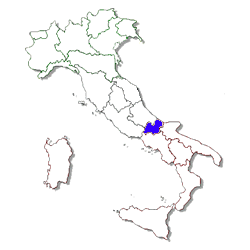 Molise - Southern Italy Molise - Southern Italy
For most Italians, Molise and Abruzzo are notably linked. This small, unyielding region facing the Adriatic only gained independence from Abruzzo in 1963. Molise is unique in that it is somewhat insulated from the changes that have overtaken the rest of the Italy. Bread, wine, and oil are staples of Molise cuisine. In fact, olive oil is the region's primary industry. Chili pepper is used liberally and often here, as it is in most other southern Italian regions. Very little meat is eaten in Molise; when it is, it's likely to be lamb or pork.
For more information on Molise click here →
|
Basilicata - Southern Italy
|
| |
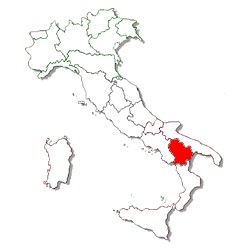 Basilicata - Southern Italy Basilicata - Southern Italy
Southern Italy (est. pop. 600,000) 3,856 sq mi (9,987 sq km) Small and lowly populated, Basilicata lays between Campagna, Puglia, and Calabria at the upper heal of the Italian boot claiming a tiny bit coastland on the west and the Gulf of Taranto at its bottom edge. Most of the region's land is parched and dry, making Basilicata one of Italy's worst agricultural regions. The standard food staple is vegetables and pasta, with meat held for special occasions. Nearly every vegetable consumed in Italy is eaten in Basilicata, including local bitter onions, mushrooms, fava beans, artichokes, potatoes, and peppers. Peperonata is a local favorite consisting of sweet peppers, tomatoes and chili pepper, often mixed with chunks of pork. A custom in southern cooking is the liberal use of chili pepper.
For more information on Basilicata click here →
|
Sardegna - Southern Italy
|
| |
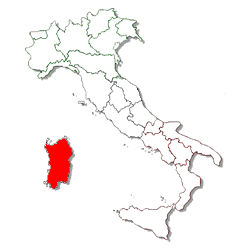 Sardegna - Southern Italy Sardegna - Southern Italy
Sardegna is the second largest island in the Mediterranean. Unlike other Mediterranean islands though, these inhabitants live in the island's mountains and not on the coast, in part due to the past when hiding from invaders that landed on the coast and to avoid the marshy coast that created the plague of malaria. Therefore, Sardegna has two distinct cuisines: coastal and inland. The coastal cuisine was influenced by invaders, who brought their ways of preparing the bounty of seafood available, including lobsters, which are rare elsewhere in Italy.
For more information on Sardegna click here →
|
Home | Advertising Information | Contact Us
Copyright ©2002 Italian Recipes Trinakria Development. All rights
reserved. |
 |
|
 |

 Regions of Italy
Regions of Italy Liguria - Northern Italy
Liguria - Northern Italy Piemonte - Northern Italy
Piemonte - Northern Italy Lombardia - Nothern Italy
Lombardia - Nothern Italy Veneto - Northern Italy
Veneto - Northern Italy Friuli Venezia Giulia - Northern Italy
Friuli Venezia Giulia - Northern Italy Val d'Aosta - Northern Italy
Val d'Aosta - Northern Italy Trentino Alto Adige - Northern Italy
Trentino Alto Adige - Northern Italy Le Marche - Central Italy
Le Marche - Central Italy Tuscany - Central Italy
Tuscany - Central Italy Umbria - Central Italy
Umbria - Central Italy Emilia Romagna - Central Italy
Emilia Romagna - Central Italy Campagnia - Southern Italy
Campagnia - Southern Italy Sicily - Southern Italy
Sicily - Southern Italy Calabria - Southern Italy
Calabria - Southern Italy Puglia - Southern Italy
Puglia - Southern Italy Lazio - Southern Italy
Lazio - Southern Italy Abruzzi - Southern Italy
Abruzzi - Southern Italy Molise - Southern Italy
Molise - Southern Italy Basilicata - Southern Italy
Basilicata - Southern Italy Sardegna - Southern Italy
Sardegna - Southern Italy